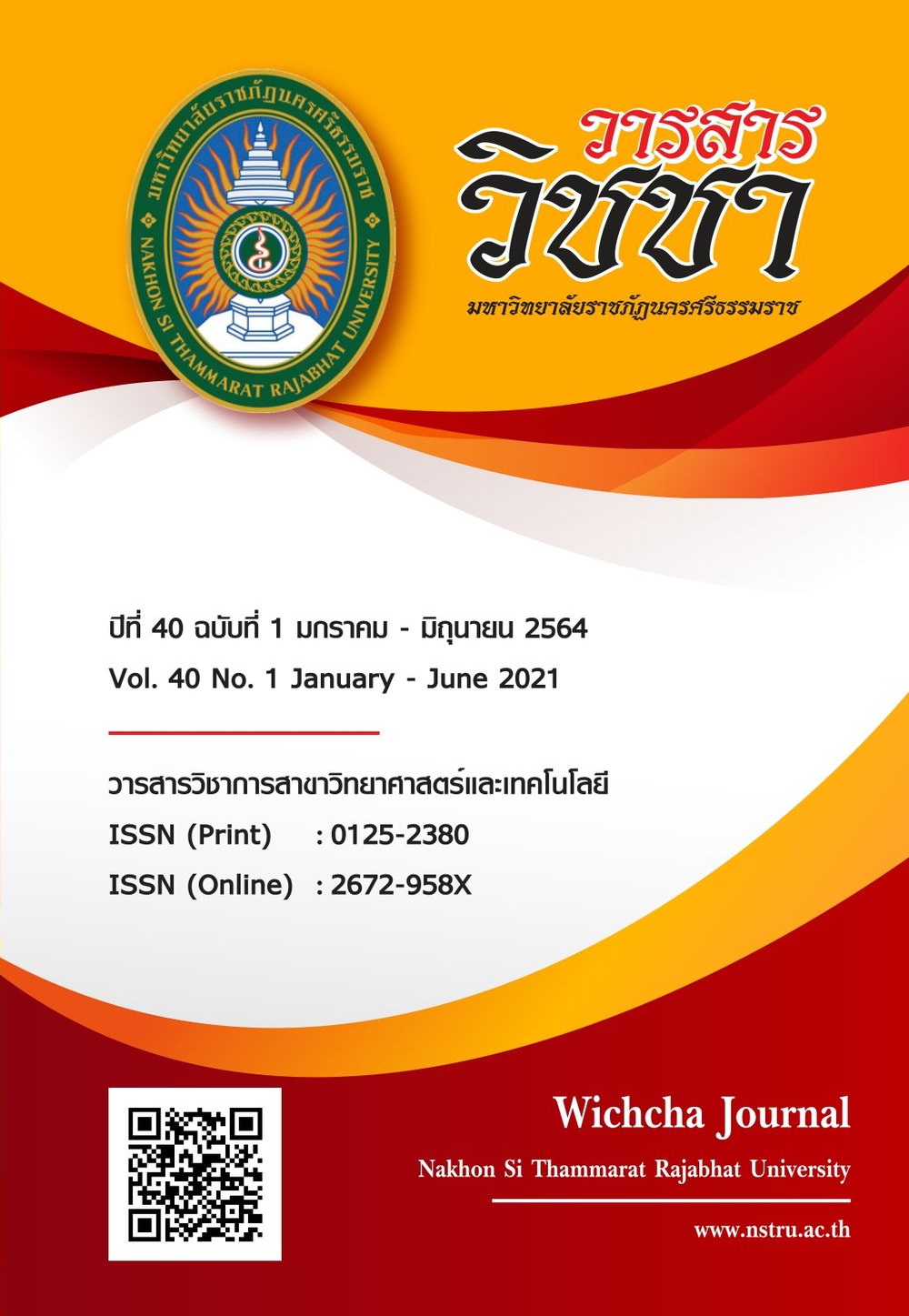Survey on Quality of Commercial Probiotic Products Used for Marine Culture of Ornamental Fish การสำรวจคุณภาพของผลิตภัณฑ์โพรไบโอติกทางการค้าที่ใช้เพาะเลี้ยงปลาทะเลสวยงาม
Main Article Content
Abstract
The objective of this study was to investigate the qualities of five commercial probiotic products for culture of marine ornamental fish by examining label information, in vitro ability of nutrient digestion (proteins, carbohydrates, and lipids), and effectiveness of ammonia reduction in seawater. All samples were imported probiotic products and showed information of product names, production sites, importer names, contents, including instructions, usage sizes, and usage ratio on their labels. However, all product samples did not meet the standards according to the Notification of the Ministry of Agriculture and Cooperatives (2016) due to the absence of manufactured dates and expiry dates on their labels. There were only 3 probiotic products (60%) declaring total viable count of bacteria on the labels by which 2 products (40%) contained the viable count less than those labeled on the products. Only protein was digested by almost all probiotic products, except product D. Only product E could digest all tested nutrients (protein, carbohydrate, and lipid). Finally, only product B was the most effective product to reduce ammonia. It showed 86.15% of ammonia reduction within 15-day incubation while other products exhibited low efficacy of ammonia reduction (<10%). This study indicated that most probiotic products sole in Thailand did not meet the standard and were ineffective for setting up the wastewater treatment system in the aquarium of marine ornamental fish.
Article Details
เนื้อหาและข้อมูลในบทความที่ลงตีพิมพ์ในวารสารวิชชา มหาวิทยาลัยราชภัฏนครศรีธรรมราช ถือเป็นข้อคิดเห็นและความรับผิดชอบของผู้เขียนบทความโดยตรง ซึ่งกองบรรณาธิการวารสารไม่จำเป็นต้องเห็นด้วยหรือร่วมรับผิดชอบใด ๆ
บทความ ข้อมูล เนื้อหา รูปภาพ ฯลฯ ที่ได้รับการตีพิมพ์ในวารสารวิชชา มหาวิทยาลัยราชภัฏนครศรีธรรมราช ถือเป็นลิขสิทธ์ของวารสารวิชชา มหาวิทยาลัยราชภัฏนครศรีธรรมราช หากบุคคลหรือหน่วยงานใดต้องการนำข้อมูลทั้งหมดหรือส่วนหนึ่งส่วนใดไปเผยแพร่ต่อหรือเพื่อการกระทำการใด ๆ จะต้องได้รับอนุญาตเป็นลายลักษณ์อักษรจากวารสารวิชชา มหาวิทยาลัยราชภัฏนครศรีธรรมราชก่อนเท่านั้น
The content and information in the article published in Wichcha journal Nakhon Si Thammarat Rajabhat University, It is the opinion and responsibility of the author of the article. The editorial journals do not need to agree. Or share any responsibility.
References
ประกาศกระทรวงเกษตรและสหกรณ์ เรื่อง กําหนดหลักเกณฑ์การแสดงฉลากและข้อความในฉลาก สําหรับอาหารสัตว์ควบคุมเฉพาะ พ.ศ. 2559. (2559, 13 มกราคม). ราชกิจจานุเบกษา. เล่ม 133 ตอนพิเศษ 9 ง. หน้า 3.
มั่นสิน ตัณฑุลเวศน์. (2538). คู่มือวิเคราะห์คุณภาพน้ำ. กรุงเทพฯ: สำนักพิมพ์แห่งจุฬาลงกรณ์มหาวิทยาลัย.
สุบัณฑิต นิ่มรัตน์ มานพ กาญจนบุรางกูร ปิยาภรณ์ สมสมัคร นเรศ เชื้อสุวรรณ ปฏิมา ชัยพิริยะศักดิ์ และวีรพงศ์ วุฒิพันธุ์ชัย. (2550). คุณสมบัติของผลิตภัณฑ์โพรไบโอติกที่จำหน่ายในประเทศไทยและต่างประเทศ. วารสารการประมง, 60(1), 27-34.
American Water Works Association and Water Pollution Control Federation. (1980). Standard method for the examination of water and wastewater (15th ed). Washington D.C.: American Public Health Association.
Dhaneesh, K.V., Vinoth, R., Ghosh, S., Gopi, M., Ajith Kumar, T.T. and Balasubramanian, T. (2013). Chapter 17: Hatchery production of marine ornamental fishes: an alternate livelihood option for the island community at Lakshadweep. In Sundaresan, J., Sreekesh, S., Ramanathan, A.L. and Boojh, R. (Eds.). Climate change and island and coastal vulnerability, pp. 253-265. Dordrecht: Springer.
Gay, J. (2005). The perfect aquarium. London: Octopus.
Jung, J.Y., Chung, Y.C., Shin, H.S. and Son, D.H. (2004). Enhanced ammonia nitrogen removal using consistent biological regeneration and ammonia exchange of zeolite in modified SBR process. Water Research, 38(2), 347-354.
Kim, J.K., Park, K., Cho, K.S., Nam, S.W., Park, T.J. and Bajpai, R. (2005). Aerobic denitrification-denitrification by heterotrophic Bacillus strains. Bioresource Technology, 96(17), 1897-1906.
Lahtinen, S.J., Gueimonde, M., Ouwehand, A.C., Reinikainen, J.P. and Salminen, S.J. (2005). Probiotic bacteria may become dormant during storage. Applied and Environmental Microbiology, 71(3), 1662-1663.
Morales, M.E. and Ruiz, M.A. (2016). Chapter 16: Microencapsulation of probiotic cells: applications in nutraceutic and food industry. In Grumezescu, A.M. (Ed). Nanotechnology in the agro-food industry volume 4: nutraceuticals, pp. 627-668. Amsterdam: Elsevier Science Publishers.
Nimrat, S. and Vuthiphandchai, V. (2011). In vitro evaluation of commercial probiotic products used for marine shrimp cultivation in Thailand. African Journal of Biotechnology, 10(22), 4643-4650.
Palmtag, M.R. (2017). The marine ornamental species trade. In Calado, R., Olivotto, I., Oliver, P.M., and Holt, J. (Eds). Marine ornamental species aquaculture, pp. 3-14. Chichester, UK: .John Wiley & Sons Ltd.
Ringø, E. (2020). Probiotics in shellfish aquaculture. Aquaculture and Fisheries, 5(1), doi: https://doi.org/10.1016/j.aaf.2019.12.001.
Strickland, J.D.H. and Parson, T.R. (1972). A practical handbook of seawater analysis (2nd ed). Ottawa: Fisheries Research Board of Canada Bulletin.
Yanong, R.P.E. (2003). Fungal diseases of fish. Veterinary Clinics: Exotic Animal Practice, 6(2), 377-400.


